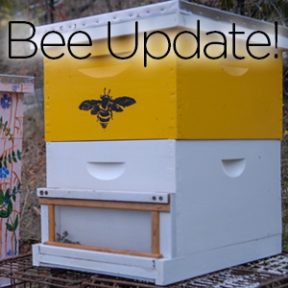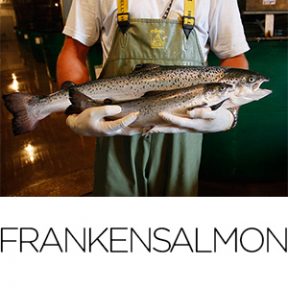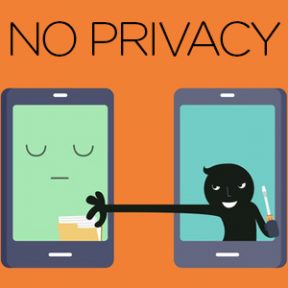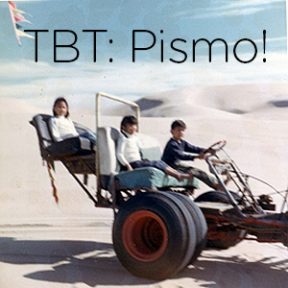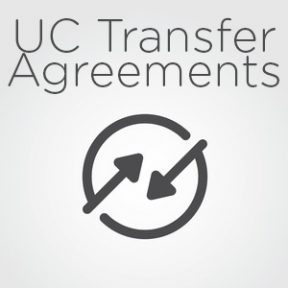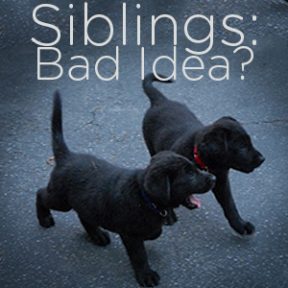 With the warm weather, flowers in bloom, and careful monitoring, our 3 beehives are thriving. We started with about 15,000 bees (about 5,000 per hive), and now our best guess is that we have over 30,000 bees! After our first 2 hives absconded last year, Rob and John have invited Andrea Ramaeker and her mentor, Emily, to check in on our bees to make sure they’re okay.
With the warm weather, flowers in bloom, and careful monitoring, our 3 beehives are thriving. We started with about 15,000 bees (about 5,000 per hive), and now our best guess is that we have over 30,000 bees! After our first 2 hives absconded last year, Rob and John have invited Andrea Ramaeker and her mentor, Emily, to check in on our bees to make sure they’re okay.
The bees are busy making honey and taking care of the queens. The worker bees spend their short lives searching for pollen and keeping the queen happy and safe. When they fill up these hives with honey, we’ll add our Flow Hives. Cross your fingers that we can keep these bees through the winter. Just think, we’ll have honey for all of our family and friends!

 With the warm weather, flowers in bloom, and careful monitoring, our 3 beehives are thriving. We started with about 15,000 bees (about 5,000 per hive), and now our best guess is that we have over 30,000 bees! After our first 2 hives absconded last year, Rob and John have invited Andrea Ramaeker and her mentor, Emily, to check in on our bees to make sure they’re okay.
With the warm weather, flowers in bloom, and careful monitoring, our 3 beehives are thriving. We started with about 15,000 bees (about 5,000 per hive), and now our best guess is that we have over 30,000 bees! After our first 2 hives absconded last year, Rob and John have invited Andrea Ramaeker and her mentor, Emily, to check in on our bees to make sure they’re okay.
The bees are busy making honey and taking care of the queens. The worker bees spend their short lives searching for pollen and keeping the queen happy and safe. When they fill up these hives with honey, we’ll add our Flow Hives. Cross your fingers that we can keep these bees through the winter. Just think, we’ll have honey for all of our family and friends!

 I remember the first time I ate fresh-caught wild salmon. Oh wow! It was so DELICIOUS! It didn’t taste like the salmon that I had been eating until then, but fresh-caught wild salmon was so light and flakey that it melted in my mouth. Spoiled by that experience, I stopped eating Atlantic salmon (which is farm raised) or any other farm-raised fish. At first, I made this decision based on flavor only. Then, when I learned about the terrible practices of using antibiotics in treating farm-raised fish and the filthy conditions in which the fish are raised, I became even more adamant about eating only wild fish. But now, corporations have just won the right to GENETICALLY ENGINEER OUR SALMON, and what’s worse: THEY DON’T HAVE TO INDICATE THAT THE FISH IS GENETICALLY ENGINEERED ON THE LABEL!
I remember the first time I ate fresh-caught wild salmon. Oh wow! It was so DELICIOUS! It didn’t taste like the salmon that I had been eating until then, but fresh-caught wild salmon was so light and flakey that it melted in my mouth. Spoiled by that experience, I stopped eating Atlantic salmon (which is farm raised) or any other farm-raised fish. At first, I made this decision based on flavor only. Then, when I learned about the terrible practices of using antibiotics in treating farm-raised fish and the filthy conditions in which the fish are raised, I became even more adamant about eating only wild fish. But now, corporations have just won the right to GENETICALLY ENGINEER OUR SALMON, and what’s worse: THEY DON’T HAVE TO INDICATE THAT THE FISH IS GENETICALLY ENGINEERED ON THE LABEL!
This is WRONG on so many levels.
Here are some bullet points about GE Salmon:
- In Nov 2015, the Food and Drug Administration (FDA) approved genetically engineering food animal for sale and human consumption (Of course, the US is the first government agency to do this…)
- GE Salmon = Atlantic salmon, deep-water ocean eelpout, and Pacific Chinook salmon all genetically combined to create this Frankenfish
- GE Salmon grows twice as fast as Atlantic salmon (imagine the hormones needed to produce this?)
- GE Salmon will not be labeled so you won’t know when you’re eating GE, farm-raised, or wild salmon when reading the labels.
- GE Salmon eggs will be manufactured in Canada but GE Salmon will be raised in Panama. The food will travel 5,000 miles before reaching the US.
- GE Salmon will destroy our wild salmon population and produce unknown hazards in our ecosystems.
Dr. Anne Kapuscinski and Dr. Frederik Sundstrom, National Marine Fisheries Service and Fish and Wildlife Service, oppose the FDA’s decision to approve GE salmon. They claim that the FDA hasn’t effectively evaluated environmental risks. Sign petitions and contact your representatives to STOP genetic engineering of salmon and all fish, and require all food manufacturers to list ingredients and food processing techniques (genetic engineering) on their products.
[Source]
 I’m an old timer. In high school, I had to wait hours to use our family phone (aka landline) and remember having numerous arguments with my siblings about their long phone calls that resulted in that annoying busy signal of the old Ma Bell days when my friends were trying to call me.
I’m an old timer. In high school, I had to wait hours to use our family phone (aka landline) and remember having numerous arguments with my siblings about their long phone calls that resulted in that annoying busy signal of the old Ma Bell days when my friends were trying to call me.
Then, when I got my first cell phone, it was the size of my shoe (no kidding!) and all it did was make very expensive phone calls. I bought it when I was pregnant with Nicole and thought it was the coolest device ever because I could call Rob from my car when I went into labor. But now, cell phones are mini laptops that have amazing capabilities. There’s very little that my cell phone can’t do and I find that I can’t be without it – ever! So that’s why I’m so concerned about my privacy.
I just heard that if I wanted to spy on someone, I could have unlimited access to this person’s mobile device and covertly collect information about relationships, locations, phone conversations, plans, activities – whenever or wherever they are. It leaves no traces so the person will never know that you’re spying and they can’t trace it back to you. Because this is new technology, the costs are high (just like a prototype). For the use of this type of surveillance, the costs are between $500,000 and $800,000. Phew! I doubt anyone would pay that to see that I’m writing blogs or talking to college-bound kids. But, my biggest fear is that as technology improves and more people purchase these types of software, the costs will be driven down and soon it’ll be a free app on everyone’s phones.
The way I look at online communication today is that anything I post, email, text, or search should be something that I would feel comfortable having my enemies and the government see. It’s kind of like the advice I give my clients about social media: Don’t post photos or write messages on social media that you wouldn’t want your future mother-in-law or employer to see. Assume you have no privacy because you really don’t.
Hmm. Looks like writing good ol’ fashioned letters and sending them snail mail may be the only way we will be able to maintain our privacy when we aren’t having face-to-face conversations. And, that actually sounds refreshing to me!
[Source]
 My office desperately needed new carpets. There were spots where the carpet was bare from sun exposure and wear and tear. Normally I maintain these kinds of things but I kept putting off this project simply because I have so much heavy furniture (oak filing cabinets and desks, huge metal filing cabinets, and thousands of books and games). Just the thought of moving everything out was enough for me to look the other way and cover those bare spots with rugs for years.
My office desperately needed new carpets. There were spots where the carpet was bare from sun exposure and wear and tear. Normally I maintain these kinds of things but I kept putting off this project simply because I have so much heavy furniture (oak filing cabinets and desks, huge metal filing cabinets, and thousands of books and games). Just the thought of moving everything out was enough for me to look the other way and cover those bare spots with rugs for years.
But over the Labor Day weekend, Knights Floors came in and removed all of the furniture, installed the most luxurious carpet, and returned all of the furniture, file cabinets, and volumes of books exactly where they were before the move. They even replaced some flooring that was damaged by overwatering plants (didn’t know that was a thing…). The best part, I didn’t have to lift one piece of furniture and they handled the entire installation with smiles.
Now everyone walks into my office and comments about how “bouncy” the new carpet is. Kevin Knight, the owner of Knights Floors) put in super thick padding and the plushest carpet he could find. It’s amazing how a little thing like new carpets can improve the way you feel while you work. Thanks Kevin!
 I’ve been going to Pismo Beach to ride dune buggies and ATVs ever since I was 7 years old. My father and uncles built our first dune buggy using the metal pipes from our old swing set and bucket seats from old cars on the lot. We would drive up the coast in our camper and stay right on the sand. In the mornings, we would drive our dune buggies down the beach to find Pismo Clams. They’re the ones that are 4-inches wide, and they made delicious clam chowder on our stovetop in the camper.
I’ve been going to Pismo Beach to ride dune buggies and ATVs ever since I was 7 years old. My father and uncles built our first dune buggy using the metal pipes from our old swing set and bucket seats from old cars on the lot. We would drive up the coast in our camper and stay right on the sand. In the mornings, we would drive our dune buggies down the beach to find Pismo Clams. They’re the ones that are 4-inches wide, and they made delicious clam chowder on our stovetop in the camper.
After my daughters were born, we started the tradition of going to Pismo every September. By inviting a group of 10-12 people for each adventure, our fun-filled Pismo tradition continues even today. We rent ATVs from BJ’s ATV Rentals and ride in the Pismo sand dunes right on the beach. Where else can you ride an ATV along the ocean and then race in huge sand dunes? We always have a few crazy people who get 5-6 feet of air (Sam Artioli), roll down the dunes (Rob D’Arcy), and flip their ATV (Vicky Tian) but we always make it out alive. Looking forward to our next Pismo adventure in 2 weeks!

 About 3 years ago, we drove up to Pescadero to dig out 50 raspberry cane from a fellow’s garden. He had posted an ad on Craigslist that he was clearing his raspberry patch and was selling each cane for $5.
About 3 years ago, we drove up to Pescadero to dig out 50 raspberry cane from a fellow’s garden. He had posted an ad on Craigslist that he was clearing his raspberry patch and was selling each cane for $5.
Rob and I planted each of the 50 cane in our raspberry patch after building above ground planters and fencing around the entire patch to keep out the deer and critters. We anxiously awaited harvest time in our raspberry patch each season only to gather a handful of berries. Even with fertilizers, pruning, weeding, covering the patch, our berries were so small we couldn’t serve them with any of our desserts.
Then this year, we got our first bumper crop of raspberries. There were so many raspberries on each cane that they were leaning over from the weight! Wow! Each raspberry that we picked was plump and beautiful. I must have eaten a quart on the first day! I think the cane just needed a few years to establish themselves in their new homes. With this new season from September to December, I’m looking forward to eating my favorite fruit!

 If you’re set on transferring from a California community college to one of the 6 UC campuses (Davis, Irvine, Merced, Riverside, Santa Barbara, Santa Cruz) that offer Transfer Agreement Guarantees (TAG), your deadline is Sept 30th – not November 30th like regular transfer applications. The benefit of participating in TAG is that your application will receive an early review and you’ll be notified earlier, similar to Early Action applications at private colleges.
If you’re set on transferring from a California community college to one of the 6 UC campuses (Davis, Irvine, Merced, Riverside, Santa Barbara, Santa Cruz) that offer Transfer Agreement Guarantees (TAG), your deadline is Sept 30th – not November 30th like regular transfer applications. The benefit of participating in TAG is that your application will receive an early review and you’ll be notified earlier, similar to Early Action applications at private colleges.
As a TAG applicant, you can only apply to one UC campus. I recommend that you still apply to other UC campuses to keep your options open should you not get into your top choice. Regular applications are accepted from November 1-30.
Meet with your community college advisor to complete that application using the UC Transfer Admission Planner. TAG applications are accepted from September 1-30, and you’ll be notified if your TAG has been approved in November. You’ll still need to complete the regular UC application during the regular application period of November 1-30.
Here are the TAG guidelines: http://admission.universityofcalifornia.edu/counselors/files/tag-matrix.pdf
 It’s been exactly a week since we got our 2 puppies, although it feels like a month!
It’s been exactly a week since we got our 2 puppies, although it feels like a month!
I usually do extensive research about everything before taking bold steps like adopting TWO PUPPIES, but as you all know, it was a surprise gift from our kids. After reading volumes of pet training guides that flat-out state that you shouldn’t adopt sibling puppies or any 2 puppies at the same time because it causes all kinds of social and psychological problems for them, we are now really torn about what to do.
Professional dog trainers all warn against adopting more than one puppy at a time. Apparently, the puppies bond to one another and not to humans. As they get older, they don’t play well with other dogs because they consider them threats. The siblings dogs often fight themselves and establish what I call their own “pecking order.”
For those pet owners who brave raising 2 sibling pups, the experts recommend separating them during feeding, training, playing, and sleeping for the first 12-14 months so they can each develop a relationship with us humans. It also gives each pup a year to develop their own personalities without being bullied by the alpha dog. But, this now requires twice as much time!
Now that Rob’s retired, he does have more time. But I’m working a bazillion hours a week running my businesses and doing another gazillion projects. We’re both still wondering what would be best for the pups, and for us. It would break Jaclyn’s heart if we gave one of the pups to a new owner so we have some difficult decisions to make. If it were a year and a half later (after her residency and fellowship), Nicole would probably be ready to adopt a pup. Radar, Jaclyn’s 16-year old dog, doesn’t like the puppies and she’s sensitive to his needs so she can’t take one of them either.
I’m open to suggestions! Does anyone have any tips for us?

 I’m a night nibbler. In the middle of the night, I like to get a sip of water and a little bite to eat.
I’m a night nibbler. In the middle of the night, I like to get a sip of water and a little bite to eat.
One night a few weeks ago (before puppies) as I made my way up to the kitchen, I noticed all of my Rice Krispie sculpture supplies strewn across the kitchen floor. I stepped over the bags of marshmallows and crushed the Rice Krispies with each step. At first, I thought that Radar (Jaclyn’s dog) had a sudden craving for something sweet, but then I noticed our recycling container was knocked over. Radar would never be able to knock that down.
Then I realized that a critter must have come through our doggie door and helped himself to our kitchen. EWWWW! I quickly locked the doggie door, but then worried that maybe that critter was still ravaging his way through other parts of the house, and I locked him inside! We now keep the doggie door locked except when Radar is here.
Lesson learned: critters have no manners so protect yourself!

 You know the old saying, “Practice makes perfect”? You know the one – your mother probably said this as you sat down at the piano or as your father tossed you a basketball. Well, there’s actually science to back it up. The more time you spend on learning or doing something, the better you become. Yup, you already know this. But did you know that this same principle holds true for negative things? That means that if you spend a lot of time regurgitating thoughts about retaliating against someone or stagnating on a depressing thought, you actually become better at it and your brain puts more into building those neural connections than doing more positive things.
You know the old saying, “Practice makes perfect”? You know the one – your mother probably said this as you sat down at the piano or as your father tossed you a basketball. Well, there’s actually science to back it up. The more time you spend on learning or doing something, the better you become. Yup, you already know this. But did you know that this same principle holds true for negative things? That means that if you spend a lot of time regurgitating thoughts about retaliating against someone or stagnating on a depressing thought, you actually become better at it and your brain puts more into building those neural connections than doing more positive things.
This reminds me of the old adage: Misery loves company. When people feel unhappy, they want to wallow in it with friends who are experiencing the same pain. It’s a natural tendency. But what researchers are finding today is that in order to pull yourself out of these miserable conditions, you need to make room in your brain to develop happier or positive thoughts. So you need to shut off the negative influences so you can practice more productive behaviors. This is not just a psychological step but a neurological path to happiness and productivity.
You know how you feel when you wake up after a good night’s sleep? If you’re like me, you feel energized. The problems you were stressed about the night before now seem easy to solve. It’s like your dreams cleared the clutter in your mind that built up over the whole day and gave you a fresh start in the morning. So when you’re trying to break old habits or make new healthy ones, you need more room in your brain to establish these new neurological pathways. Get a good night’s sleep, choose positive things to do and to think about, and shut out negative thoughts and people so you can create a healthy mind.

